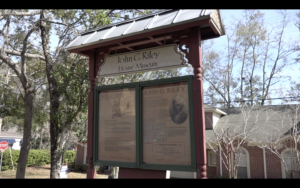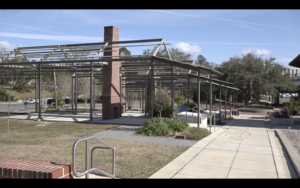
Every month is black history month for this historical landmark, located in downtown Tallahassee.
The Riley House Museum was rated No. 8 on the Black Entertainment Television’s list of “must see African American places in the U.S.”
The museum continues to pay homage to the late civic leader, John G. Riley who once built, lived and owned the now museum back in the 1800’s.
Here, guests are able to experience the house that once sheltered the spirit of Riley. Guests are even greeted by the civic leader who sits in the living room at his work desk and is self-operated; interacting with visitors while telling them the history of his home.
Visitors talk about how the museum is such an important landmark for Tallahassee.
“For him to become, what today would be a billionaire, is probably completely unknown by the American public. It shows some people that if they work hard enough and focus, they can do almost anything against incredible odds.” Mark Sangra said. “I think it’s a really important part of African American history to have this particular house.”
The antique home is the only home that remains as the last visible evidence of Smokey Hollow, a neighborhood teeming with African Americans that eliminated due to urban renewal in the ’60s.

The Smokey Hollow Commemoration feature can be found across the street from the museum, at Cascade park.
The exhibit portrays three open village-like homes, using brick and steel to represent the “shotgun homes” that once occupied half of what we call today’s Cascade Park, 60 years ago.
Each home carries a name: “Family Spirit,” “Enduring Spirit” and “Community Spirit” along with a podium that has photos of the original homes and a map with a description of how the homes were furnished once before.
There is also a community garden that symbolizes how the residents of Smokey Hollow used to grow their crops. The garden is open to the public to pick fruits and vegetables if wanted.
“I don’t know much about the major historical landmarks here in Tally because I’m from Miami. But I do know Tallahassee is a pretty small city,” Monet Johnson, a visitor, said.
“So, knowing something this impactful happened in such a small city, was surprising. I’m just glad Tallahassee was able to recover what they could to offer this kind of landmark for people. I don’t think we learn much about this in school.”
Paige Lee, director of the Riley House Museum, talked about what the museum has to offer to the community.
“The Riley Museum primarily offers, aside from being just a museum, we are also a research center. So, we offer information and publications about African American history and about Florida’s history, especially about Tallahassee. We also offer many events to the community. So, we’ll host events where you can come and listen to live interviews that are 40 to 50 years old from people who have lived during that time period,” Lee said.
“We also host heritage education programs where we inform children in the community about their heritage, things they are not often taught in school,” she added.
The museum serves as a reminder of African American leadership in Florida’s capital city. The museum is also included on the Florida Black Heritage Trail, which shines light on important African American landmarks around the state.
You can find the cultural gem located at the corner of Jefferson and Meridian streets. The museum is also a non-profit organization and if you would like to donate you can visit its website at rileymuseum.org.